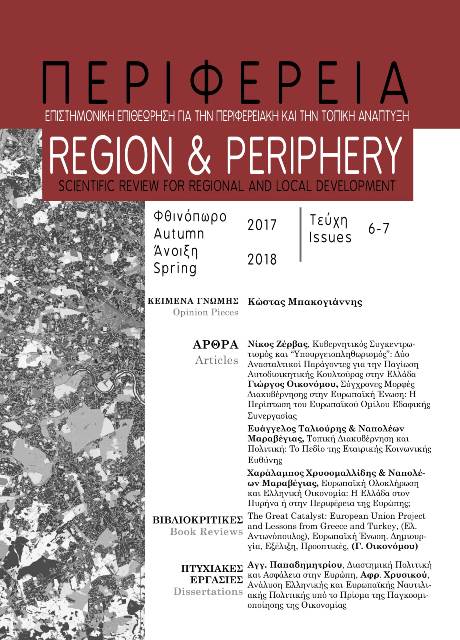The Capacity of the European Union to Finance Public Policies: Multi-Annual Financial Frameworks in Comparative Perspective

Abstract
This paper aims at examining the fi scal capacity of the EU by focusing on the Multiannual Financial Frameworks (MFFs). Taking into consideration the policy areas fi nanced by the EU budget, the analysis draws on the MFFs 2007-2013 and 2014-2020, and compares them with the proposed by the Commission MFF 2021-2027. The main objective is to shed light on the evolution of the MFFs by utilizing empirical data, fi nancial reports, and other policy papers. Drawing on the historical institutionalism literature, the main hypothesis is that the evolution of the MFFs follows an incremental path, and no substantial change whatsoever is observed with regard to the fi scal capacity of the EU; however, the ongoing negotiations with regard to the MFF 2021-2027 can be considered as critical, due to the fact that they can produce punctuated dynamics and discontinuities, thus change, with regard to the available financial resources for specific policy fields.
Article Details
- How to Cite
-
Oikonomou, G., Natsios, E., & Kazantzis, K. (2019). The Capacity of the European Union to Finance Public Policies: Multi-Annual Financial Frameworks in Comparative Perspective. Perifereia | Regional Integration: Politics, Economics, Governance, (8), 27–47. https://doi.org/10.12681/rp.21152
- Section
- Research Articles

This work is licensed under a Creative Commons Attribution-NonCommercial 4.0 International License.
Authors who publish with this journal agree to the following terms:
· Authors retain copyright and grant the journal right of first publication with the work simultaneously licensed under a Creative Commons Attribution Non-Commercial License that allows others to share the work with an acknowledgement of the work's authorship and initial publication in this journal.
· Authors are able to enter into separate, additional contractual arrangements for the non-exclusive distribution of the journal's published version of the work (e.g. post it to an institutional repository or publish it in a book), with an acknowledgement of its initial publication in this journal.
· Authors are permitted and encouraged to post their work online (preferably in institutional repositories or on their website) prior to and during the submission process, as it can lead to productive exchanges, as well as earlier and greater citation of published work.



